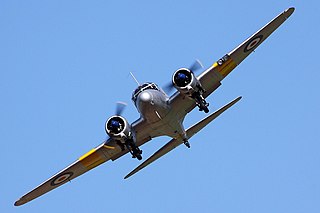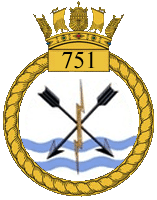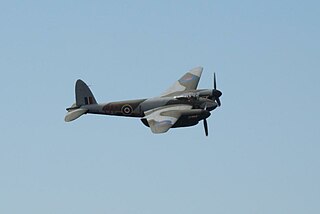Related Research Articles

Royal Air Force Mona, or more simply RAF Mona, is a Royal Air Force station near Bodffordd on the island of Anglesey, Wales. It is primarily used as a relief landing ground for RAF Valley.

Royal Naval Air Station Lee-on-Solent,, is a former Royal Naval Air Station located near Lee-on-the-Solent in Hampshire, approximately 4 miles (6.44 km) west of Portsmouth, on the coast of the Solent.

Royal Air Force Kai Tak or more commonly RAF Kai Tak is a former Royal Air Force station situated in Hong Kong, at Kai Tak Airport, Kowloon. It was established by the Royal Air Force (RAF) in 1927 and used for seaplanes. The RAF flight operated a few land based aircraft as well as having spare aircraft for naval units.

667 Squadron AAC is a former squadron of the British Army's Army Air Corps (AAC).

HMS Sultan is a stone frigate of the Royal Navy in Gosport, Hampshire, England. It is the primary engineering training establishment for the Royal Navy and home to the Network Rail Advanced Apprenticeship Scheme and the EDF Energy engineering maintenance apprenticeship.
Aberporth Airport is situated southwest of Aberporth, Ceredigion, Wales. The airport is being developed as West Wales Airport for domestic flights. It is also developing as a centre for the deployment of civil and military unmanned aerial vehicles (UAVs), known as 'drones'. The airport underwent major improvements in 2008 which extended the length of the runway from 945 to 1,257 m.
Royal Air Force Heathfield, or more commonly RAF Heathfield, sometimes known as RAF Ayr/Heathfield due to its proximity to Glasgow Prestwick Airport, which was also used by military flights, is a former Royal Air Force station. It opened in April 1941 as an airbase for day and night fighter squadrons. In September 1944 it transferred to Fleet Air Arm control and commissioned as HMS Wagtail. The Royal Navy paid off the airbase in March 1946 and it was reduced to care and maintenance. The United States Air Force used it for storage between 1951 and 1957.

HM Prison Ford is a Category D men's prison, located at Ford, in West Sussex, England, near Arundel and Littlehampton. The prison is operated by His Majesty's Prison Service.
Royal Naval Air Station Donibristle or more simply RNAS Donibristle was a former Fleet Air Arm base located 2.7 miles (4.3 km) east of Rosyth, Fife, and 8.7 miles (14.0 km) northwest of Edinburgh. It was also known as HMS Merlin.

708 Naval Air Squadron was a Fleet Air Arm (FAA) naval air squadron of the United Kingdom’s Royal Navy (RN) which disbanded during February 1946. It formed during October 1944 at HMS Daedalus, RNAS Lee-on-Solent, as the Firebrand Tactical Trials Unit, before moving to nearby RAF Gosport the following January. Tasked with looking into issues distinct to the Blackburn Firebrand the unit also performed deck landing training and torpedo exercises with the aircraft. The squadron moved to RNAS Ford where a number of personnel including the CO provided the core for the formation of 813 Naval Air Squadron, the Fleet Air Arm’s initial operational Blackburn Firebrand unit. The squadron relocated to RNAS Fearn at the beginning of December and then in January 1946 it moved to RNAS Rattray.

720 Naval Air Squadron was a Fleet Air Arm (FAA) naval air squadron of the United Kingdom’s Royal Navy (RN). The squadron originated as the Catapult Fight for the New Zealand Division and it achieved squadron status and a shore base at Auckland, New Zealand, before the start of the Second World War. However it was absorbed into 700 Naval Air Squadron in January 1940. The squadron reformed at the beginning of August 1945, from an unnumbered photographic flight originally formed in December 1940, at HMS Peregrine, RNAS Ford, in Sussex, as the RN Photographic Squadron. It moved to HMS Siskin, RNAS Gosport, in Hampshire, during May 1948, but 720 Naval Air Squadron disbanded in January 1950, with 771 Naval Air Squadron taking on the aircraft and duties.

744 Naval Air Squadron is a Fleet Air Arm (FAA) naval air squadron of the United Kingdom’s Royal Navy (RN). It was originally established in 1943 in Nova Scotia and has undergone various re-designations and reformations throughout its history. The squadron has transitioned from early air gunner training to anti-submarine warfare and trials, and in 2018, it reformed at MoD Boscombe Down as the Mission Systems and Armament Test and Evaluation Squadron. Now, in 2024, 744 Naval Air Squadron is taking on the new role of Joint Uncrewed Air System Test and Evaluation Squadron, leading the Ministry of Defence's efforts in UAS testing and evaluation.

745 Naval Air Squadron was a Fleet Air Arm (FAA) naval air squadron of the United Kingdom’s Royal Navy (RN). It was initially active from 1943 to 1945 as a Telegraphist Air Gunner Training squadron, part of No.2 Telegraphist Air Gunner School based at R.N. Air Section Yarmouth, Nova Scotia, Canada. It reformed in April 1956 at HMS Gannet, RNAS Eglinton, Northern Ireland, as a Radar Jamming Trials Unit. It operated with four modified Grumman Avenger aircraft, undertaking a trials evaluation of the 'Orange Harvest' radar warning receiver equipment, disbanding in November 1957.

751 Naval Air Squadron was a Fleet Air Arm (FAA) naval air squadron of the United Kingdom’s Royal Navy (RN). It was initially active as an Observer Training Squadron from 1939 to 1944 as part of No.1 Observer School. 751 Naval Air Squadron formed at RNAS Ford in May 1939. Ford was attacked and bombed, in August 1940, and the following day the squadron relocated to RNAS Arbroath. Twelve months later it moved to RNAS Dundee, remaining there until disbanding at Dundee in May 1944.

762 Naval Air Squadron was a Fleet Air Arm (FAA) naval air squadron of the United Kingdom’s Royal Navy (RN). It formed at HMS Heron, RNAS Yeovilton, in March 1942 as an Advanced Flying Training School. Almost immediately the squadron relocated to HMS Vulture, RNAS St Merryn, but before the end of the year, it was back at HMS Heron. The squadron disbanded nine months later. It reformed in 1944 at HMS Daedalus, RNAS Lee-on-Solent, as a Twin Engine Conversion Unit, but immediately moved to HMS Goldcrest, RNAS Dale, where it operated a variety of multi engined aircraft. At the end of 1945 the squadron moved to HMS Sparrowhawk, RNAS Halesworth and HMS Peregrine, RNAS Ford in quick succession. Now known as the Heavy Twin Conversion Unit it spent nearly two and a half years at HMS Peregrine, before relocating to HMS Seahawk, RNAS Culdrose, where it eventually disbanded at the end of 1949.

774 Naval Air Squadron was a Fleet Air Arm (FAA) naval air squadron of the United Kingdom’s Royal Navy (RN) which last disbanded in August 1945. 774 Naval Air Squadron formed at HMS Kestrel, RNAS Worthy Down, in November 1939 as an Armament Training Squadron for Observers and TAGs. Aircraft were assigned from storage and a couple of other naval air squadrons. It moved a week later to RAF Aldergrove, and was attached to No.3 Bombing and Gunnery School. In July 1940 it moved to HMS Fieldfare, RNAS Evanton, and then in September to HMS Vulture, RNAS St Merryn, Throughout the next few years, the older aircraft were withdrawn and replaced with newer types and variants. 774 NAS moved to HMS Merganser, RNAS Rattray in October 1944, where it became a target-towing unit.

777 Naval Air Squadron was a Fleet Air Arm (FAA) naval air squadron of the United Kingdom’s Royal Navy (RN), which formed as a Fleet Requirements Unit in West Africa during the Second World War. Throughout most of 1943, the squadron was responsible for the air defence of Sierra Leone. It disbanded at HMS Spurwing, RNAS Hastings, Sierra Leone, during December 1944. The squadron reformed in May 1945, from 'B' Flight of 778 Naval Air Squadron, as a Carrier Trials Unit operating aboard HMS Pretoria Castle, and using shore bases at HMS Siskin, RNAS Gosport, and HMS Peregrine, RNAS Ford in England, and HMS Wagtail, RNAS Ayr, in Scotland. 777 Naval Air Squadron number was assigned to the aircraft collection at the Fleet Air Arm Museum in April 2006.

788 Naval Air Squadron was a Fleet Air Arm (FAA) naval air squadron of the United Kingdom’s Royal Navy (RN) which last disbanded during June 1945. The squadron formed at RN Air Section China Bay in Ceylon, in January 1942, as the British Eastern Fleet's Torpedo Bomber Reconnaissance Pool, however it lost half its strength during the heavy raids by Japanese carrier-borne aircraft in the April. The squadron regrouped at RNAS Tanga in Tanganyika, East Africa to become a Fleet Requirements Unit and relocating almost immediately to RN Air Section Port Reitz, in Mombasa, where it remained operational for the next three years.

790 Naval Air Squadron was a Fleet Air Arm (FAA) naval air squadron of the United Kingdom’s Royal Navy (RN) which disbanded in November 1949 at RNAS Culdrose. It initially formed during 1941 as an Air Target Towing Unit, at HMS Landrail, RNAS Macrihanish, in Scotland, from elements of two other Fleet Air Arm squadrons, however, this only lasted for three months and the unit was disbanded, absorbed into 772 Naval Air Squadron. It reformed the following year, in July 1942, tasked as a Fighter Direction Training Unit, at RNAS Charlton Horethorne. It provided support for the Fighter Direction School and had short spells at RAF Culmhead and RNAS Zeals, before reloacting to RNAS Dale in Pembrokeshire, next to the new purpose built Air Direction School, HMS Harrier or RNADC Kete, in 1945. The squadron moved to HMS Seahawk in Cornwall during December 1947.

796 Naval Air Squadron was a Fleet Air Arm (FAA) naval air squadron of the United Kingdom’s Royal Navy (RN) which last disbanded at RNAS Culdrose in October 1958. 796 Naval Air Squadron formed as the Eastern Fleet Torpedo Bomber Reconnaissance Pool, at RN Air Section Port Reitz, in Mombasa, in July 1942, it provided a detachment embarked in HMS Illustrious in August to support the invasion of Madagascar. This Flight also disembarked to Majunga in September to join 207 Group of the Royal Air Force and later rejoined the squadron at RNAS Tanga, in November and added operational training unit to its roles until disbanding in April 1944. It reformed in November 1947 at HMS Vulture, RNAS St Merryn, as the Aircrewman Training School, for conversion of T.A.G.'s to aircrewman standard. Its task changed to Observer School Part II in January 1950. The squadron moved to HMS Seahawk, RNAS Culdrose, in November 1953 and in 1957 took on the task of the disbanded 765 Naval Air Squadron.
References
Citations
- ↑ Sturtivant & Hamlin 2007, p. 273.
- ↑ Sturtivant & Hamlin 2007, p. 43.
- ↑ "Royal Ordnance Factories - Volume 614: debated on Monday 23 November 1959". UK Parliament. Retrieved 13 September 2023.
- ↑ "Records of the Aircraft Torpedo Development Unit and Projectile Development Establishment and successors". UK National Archives. Retrieved 13 September 2023.
- 1 2 "Inside Cornwall's abandoned secret torpedo testing station". Cornwall Live. Retrieved 13 September 2023.
- ↑ Lake 1999, p. 282.
- ↑ "Stokes Bay Pier and the Torpedo Development Unit". Friends of Stokes Bay. Retrieved 13 September 2023.
- ↑ "Policy on Aircraft Torpedo Development Unit (ATDU) Helston". UK National Archives. Retrieved 13 September 2023.
- ↑ "Introduction and use of kinetheodolites on the ATDU range at Falmouth". UK National Archives. Retrieved 13 September 2023.
Bibliography
- Lake, A. (1999). Flying units of the RAF. Shrewsbury, UK: Airlife. ISBN 1-84037-086-6.
- Sturtivant, R.; Hamlin, J. (2007). Royal Air Force flying training and support units since 1912. UK: Air-Britain (Historians). ISBN 978-0851-3036-59.